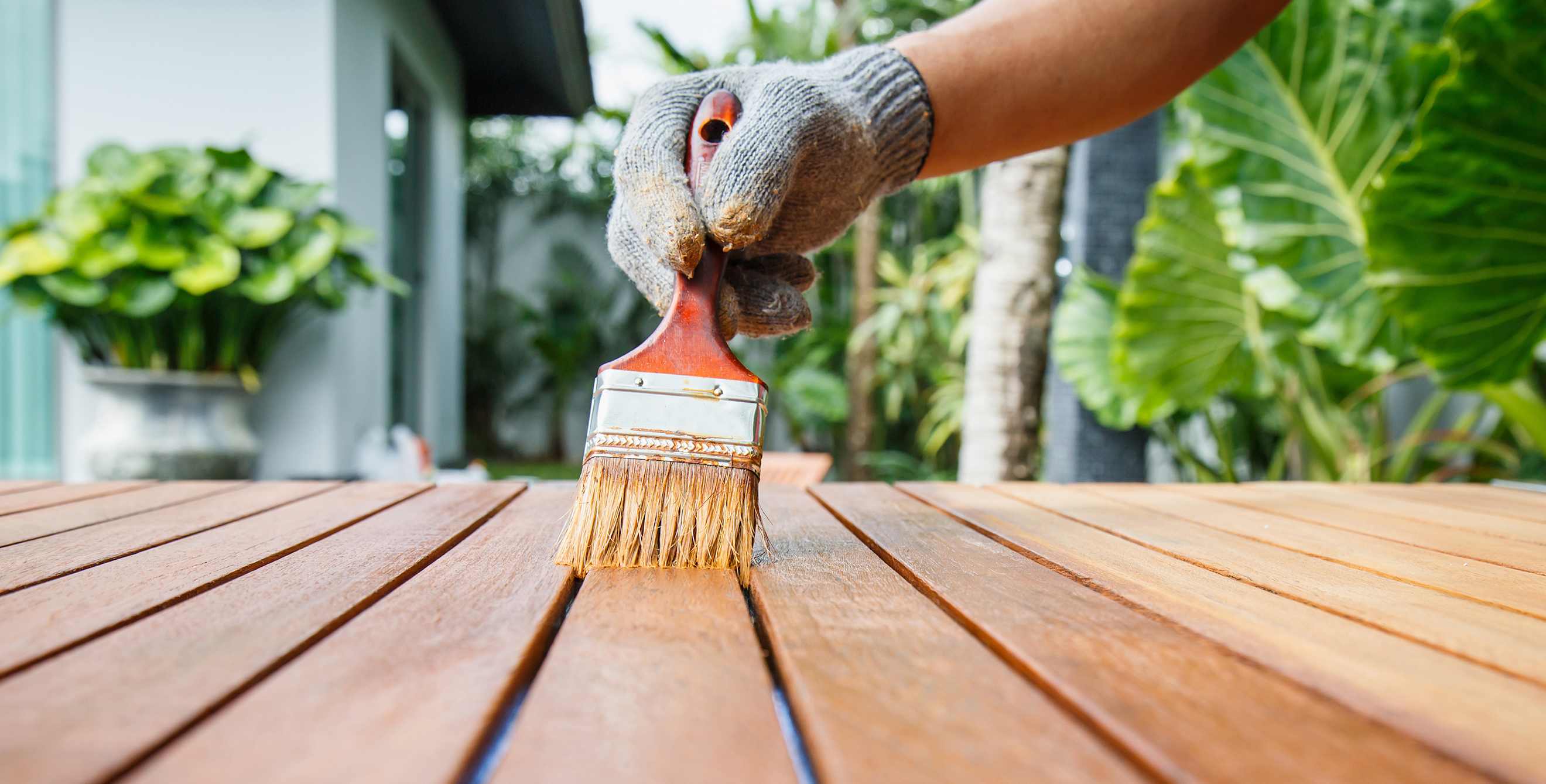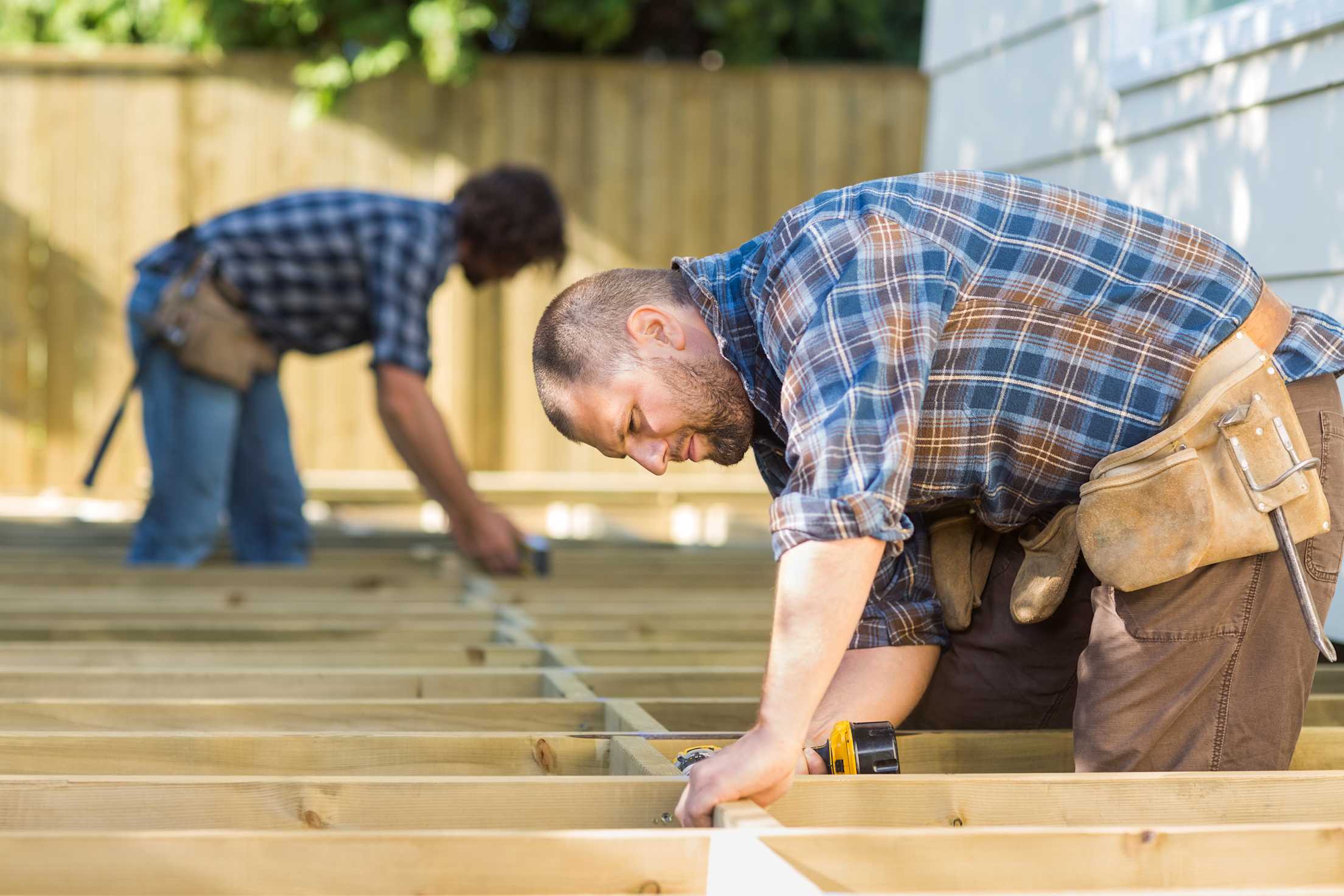
Home Maintenance Schedule
Basic maintenance tasks can quickly pile up or easily be forgotten. This checklist has you covered.

When it comes to home maintenance, mole hills can quickly become mountains if proper upkeep is ignored. The good news is that most home maintenance chores can be done by yourself. The real challenge is remembering and keeping up with the tasks. This home maintenance checklist lays out the best time to do critical home updates and inspections so you can stay on track and prevent future problems.
Home Maintenance Basics
First, you’ll need to take a thorough survey of your home, says Kathleen Kuhn, the president and CEO of HouseMaster, a home inspection company. Begin by looking for obvious problems, such as horizontal cracks, which indicate water or structural damage; any leaks or evidence of moisture; and signs of wood-destroying insects—such as termites and carpenter ants—which include discolored or drooping drywall, peeling paint, pinpoint holes in the drywall, piles of wings, mud tubes, and piles of drywood termite pellets that look like large grains of sand. From there, inspect all appliances, filters, downspouts, and drains. And don’t forget about cleaning.
“Cleaning is so, so, so underrated,” says Brentwood, California-based contractor and radio host James Carey, who co-authored Home Maintenance for Dummies with his brother, Morris Carey. “The single most cost-effective maintenance task that anyone can undertake is cleaning, both inside and outside.”
Following a regular cleaning schedule means chores like scrubbing grout and degreasing appliances won’t be nearly as daunting if grime hasn’t been left to build-up. But cleaning doesn’t simply mean scouring the floors and showers, frequent deep cleaning is essential for proper home upkeep.
When to Hire a Professional
It’s possible to keep up with home maintenance on your own, but if you’re not sure where to start, you may consider hiring a licensed home inspector to search for problem areas. “I’m the defense against the dark arts of home issues,” says Berkeley, California-based inspector Bruce MacDermott. “My responsibility is not only to tell homeowners what should be done, but how to do it and how urgent it is. That’s standard practice.” Home inspectors such as MacDermott know how to spot problems so you can fix them before they become monumental issues.
As for which tasks to chew off yourself, and which to leave to professionals, “It will vary by individual [depending on] their age, ability, and knowledge,” says Scott Swickard, a spokesperson for the California Real Estate Inspection Association. “Some simple tasks, such as changing furnace filters or adjusting sprinklers, can often be done by a homeowner but may require getting on a ladder or opening furnace panels.” He advises that professionals should always be consulted for “electrical repairs, most plumbing changes or repairs, roofing, termite or wood damage, and HVAC systems.”
Monthly Home Maintenance Tasks
“Safety is truly job one when it comes to home maintenance. I’m talking about basic home maintenance tasks—checking smoke detectors, looking for water damage, and so on—that will prevent small issues from becoming budget-busting repairs,” says James Carey of Home Maintenance for Dummies.
According to Carey, water is the “biggest home maintenance enemy.” Leaky faucets, clogged gutters, and improperly diverted downspouts can lead to major structural and foundation damage, as well as every homeowner’s enemy: mold and mildew.
- Inspect and test fire extinguishers.
- Test smoke and carbon monoxide detectors.
- Clean garbage disposal.
- Clean range hood and filter.
- Check sinks and toilets for signs of leaks.
- Ensure exterior doors, windows, and emergency exits operate easily, including locks.
- Change or clean HVAC filters.

Patch any nail pops, cracks, or holes before applying a new coat of paint.
Seasonal Home Maintenance Tasks
Behind water, wood-destroying insects are the second most common threat to the sanctity of a home, says HouseMaster’s Kuhn. “Those bugs work quickly and, if they go undetected, can significantly damage a house,” she says. “If you don’t have a regularly scheduled pest control professional, it’s time to do that.”
- Deep clean home, including tiles, grout, drains, appliances, etc.
- Ensure that water is directed away from the foundation.
- For raised foundations, check ventilation screens and access door for damage.
- Wash door and window screens; caulk frames and trim as needed.
- Clean lint from dryer duct and dryer housing interior.
- Remove debris from roof and gutters, check for damage.
- Tighten and lubricate door locks, knobs, and hinges.
- Look for mold and mildew in crawl space and basement.
- Inspect attic for leaks or signs of mold.
- Patch exterior cracks.
- Test home alarm system.
- Trim trees away from roof and gutters, and keep vegetation at least one foot away from the house.
- Test GFCI outlets to ensure they trip and reset.
- Clean and test bathroom and kitchen exhaust fans.
- Inspect washing machine water supply hoses for cracks, bulging or blisters; clean filter.
- Replace water purification filters as needed, according to manufacturer.
Annual Home Maintenance Tasks
It can be challenging to remember yearly home maintenance tasks, so Kuhn recommends setting alerts on your phone or a digital calendar to remind you.
- Replace batteries in smoke and carbon monoxide detectors, or replace them with 10-year lithium models as needed.
- Flush tank-style water heaters to remove sediment in bottom of tank; flush tankless water heaters with vinegar to descale.
- Check vent on water heater for buildup and damage.
- Clean water-heater burners, tank, and flue, per manufacturer’s instructions.
- Ensure water heater is secured for seismic safety.
- Clear debris, refuse, or fallen insulation from crawl space.
- Inspect fireplace for signs of creosote buildup and ensure the damper opens and closes fully.
- Check outdoor chimney cap and spark arrestor; replace if missing or damaged.
- Lubricate garage door springs.
- Bleed radiators that are air-logged.
- Clean refrigerator and freezer coils.
- Seal tile and grout.
- Update emergency preparedness kit.
- Check gas connections on appliances for cracks.
- Clean toilet siphon jets.
- Re-seal decks, fences, and other outdoor woodwork.
- Fill cracks and nail pops in walls.
- Scrub walls, ceilings, and cabinets; touch up paint.
- Calibrate oven temperature per manual instructions.
- Inspect driveway and pathways for damage.
- Test irrigation system and inspect sprinkler heads.
- Wash outside windows and siding.
- Touch-up exterior paint.
- Repair insulation, weatherstripping, and address air leaks.
- Hire professional to spray for bugs, including termites and ants.

Professionals can help check big items off your list.
Long-Term Home Maintenance Tasks
While most maintenance is done seasonally or annually, there are a handful of tasks that experts recommend doing every five to fifteen-plus years. Though more time-consuming, these tasks have long term payoffs. According to Kuhn, "About 90 percent of the problems we see are the result of deferred or ignored maintenance.”
Every Five-to-Ten Years
- Replace smoke and carbon monoxide detectors.
- Hire professional to service HVAC.
- Paint the exterior.
Every Ten-to-Fifteen Years
- Replace hot water heater.
- Replace garage door opener, if needed.
Every Fifteen-Plus Years
- Replace roof.
- Replace decks as needed.
- Install new HVAC units, if needed.
Smart Tip: Download this checklist so nothing goes undone.
Whether you own or rent your home, protect your personal property with AAA Insurance.